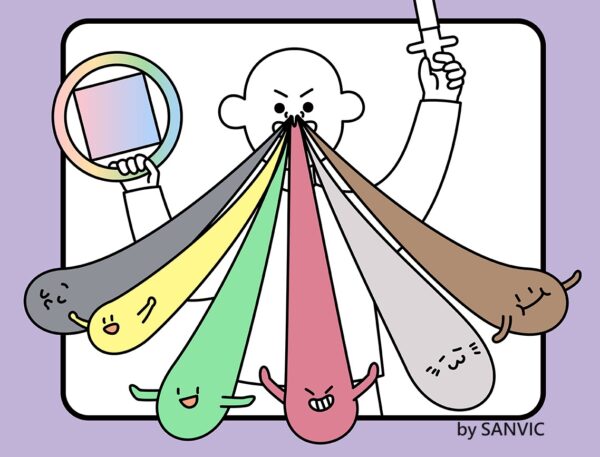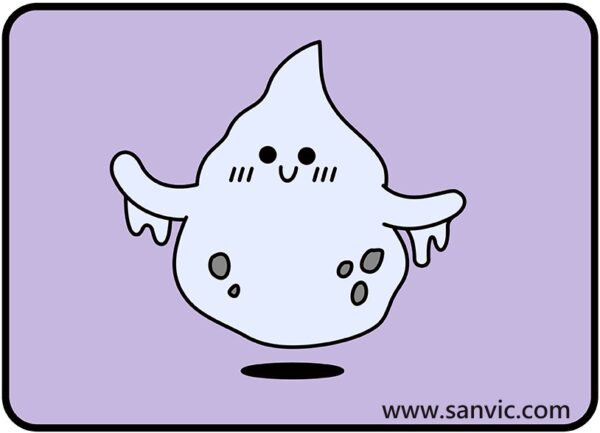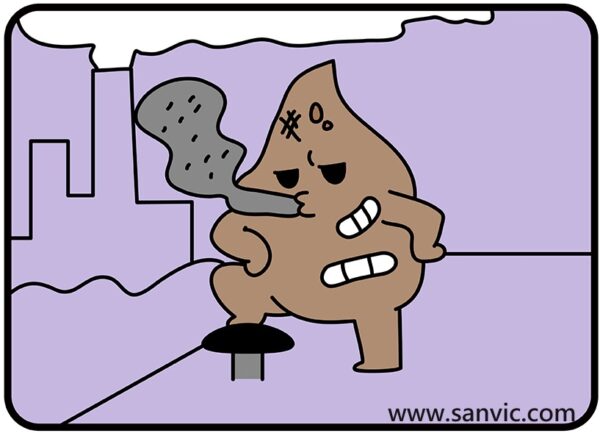The 7 Different Nasal Mucus Colors
Nasal mucus – it's always there, but have you ever wondered why it comes in so many different colors? From yellow mucus to green mucus and beyond, let's uncover the reasons behind the colors of nasal mucus.

Decoding Various Nasal Mucus Colors:
1. "Clear" Nasal Mucus: The "Natural" Nasal Mucus

As mentioned earlier, nasal mucus is a completely normal defense mechanism of our body. Even when we're in good health, our nasal passages and sinuses consistently produce clear mucus. This mucus is transparent and contains primarily water, proteins, antibodies, and salts. We often don't pay much attention to it because, after production, it's transported by tiny hair-like structures in our nasal cavity and upper respiratory tract, eventually reaching the stomach where it's broken down.
So, why does clear mucus sometimes flow from your nostrils? Isn't clear mucus a sign of good health? This is a common misconception. Clear mucus simply indicates that it doesn't contain many other elements. Allergic rhinitis, triggered by allergens like seasonal pollen, dust, dust mites, or pet dander, can cause an excess of mucus production when our body's defense mechanisms go into high gear. This extra mucus helps eliminate allergens or induces sneezing to expel them.
Beyond allergen-induced rhinitis, non-allergic factors can lead to this condition, such as smoking, exposure to chemicals or irritants, and hormonal changes (including pregnancy-related rhinitis, which often occurs between the 13th and 21st week of pregnancy in females).
Related Conditions:
- Good Health
- Allergic Rhinitis
- Non-Allergic Rhinitis
2. White Nasal Mucus: The "Dehydrated" Mucus

When you experience mild nasal congestion, your mucus may become slightly thicker and white. This happens because nasal congestion reduces the flow of mucus, leading to a loss of water content in the mucus.
Nasal congestion can be due to factors like viral or bacterial infections during a cold, resulting in inflammation and swelling of the nasal mucosa. Environmental factors, allergies, or the consumption of dehydrating substances like coffee and alcohol can also decrease mucus moisture, leading to white mucus.
Related Conditions:
- Mild Cold/Infection
- Sinusitis
3. Yellow Nasal Mucus: The "Battling" Mucus

When you spot yellow nasal mucus, the battle has commenced. Typically, you'll experience an intensification of your cold or infection symptoms, as your immune system actively combats the invaders. Yellow mucus contains the remnants of neutrophils, white blood cells that have made the ultimate sacrifice in the fight. As the mucus is expelled, it turns yellow.
Related Conditions:
- Cold/Infection
- Sinusitis
4. Green Nasal Mucus: The "Intense Battle" Mucus

When your mucus takes on a green and thick appearance, it's a sign of a fiercer immune system battle. More deceased white blood cells and other waste are expelled with the mucus. Alongside typical nasal symptoms, you might experience fever, headaches (especially around the forehead and cheekbones, where the sinuses are located), toothaches, bad breath, and other symptoms. If symptoms persist for over seven days, it could indicate a bacterial infection, and it's advisable to consult an ear, nose, and throat specialist.
Related Conditions:
- Cold/Infection
- Sinusitis
5. Red Nasal Mucus: The "Injured" Mucus

Nasal mucus with a hint of red or pink suggests the presence of blood, indicating some form of injury or dryness within the nasal passages. Possible causes include an overly dry environment, nose picking, excessive nose blowing, or other forms of injury. If it's due to dryness, consider humidifying your environment or using nasal moisturizers. Pregnant individuals, due to increased blood circulation, might be more sensitive to these factors, leading to a higher likelihood of red or bleeding mucus.
Related Conditions:
- Dryness
- Injury
- Pregnancy-Related Rhinitis
6. Brown Mucus: The "Dirty" Mucus

Brown or deep orange mucus could be dried blood, much like the explanation for red mucus. However, it's more commonly due to environmental factors causing discoloration. In areas with severe air pollution or high dust levels, mucus can trap dust particles and pollutants from the environment and expel them.
Related Conditions:
- Injury
- Environmental Factors
7. Black Nasal Mucus: The "Moldy" Mucus

If you discover black nasal mucus, it's crucial to promptly consult an ear, nose, and throat specialist for examination and treatment. Black nasal mucus is typically caused by mold, indicating a fungal infection in the sinuses. Besides mold, smokers or drug users may also experience black mucus, but a medical diagnosis is essential to determine whether a sinus fungal infection is present.
Related Conditions:
- Fungal Infection
- Smoking
- Drug Use
Nasal mucus color is just one part of the symptom puzzle. It offers insight into what might be happening in your nasal passages, but different illnesses can produce the same mucus color. If you're feeling unwell, it's advisable to seek medical consultation for an accurate diagnosis.
